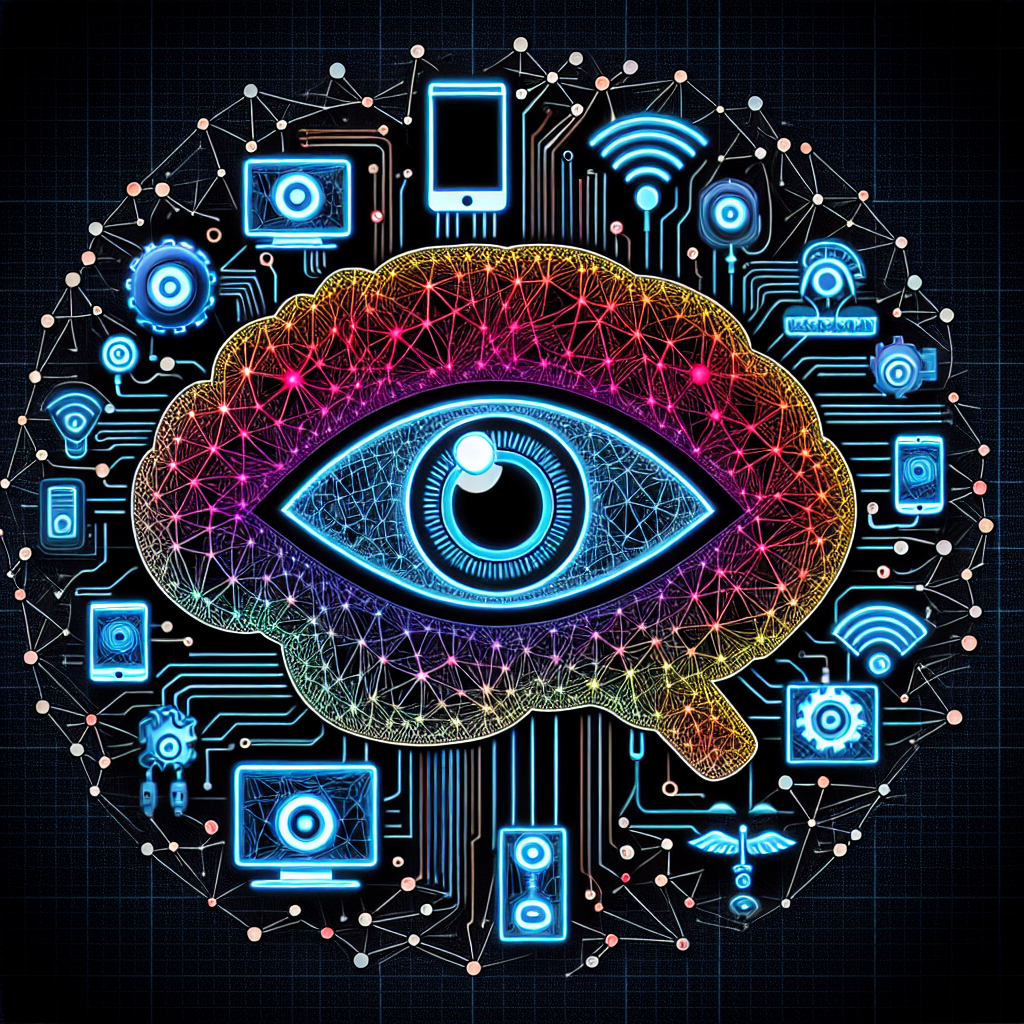The Privacy Implications of AI in the Internet of Things
The Internet of Things (IoT) has become an integral part of our daily lives, with smart devices connected to the internet and gathering data to make our lives more convenient. However, the proliferation of these devices has raised concerns about privacy and security, especially when artificial intelligence (AI) is involved in the processing of this data. In this article, we will explore the privacy implications of AI in the IoT and discuss ways to mitigate these risks.
Privacy Risks of AI in the IoT
1. Data Collection and Sharing: One of the main privacy risks of AI in the IoT is the collection and sharing of personal data without the user’s consent. Smart devices can collect a vast amount of data about users, such as their location, browsing habits, and even their health information. This data can be shared with third parties, including advertisers, without the user’s knowledge.
2. Data Breaches: AI-powered IoT devices are also vulnerable to data breaches, which can result in the exposure of sensitive personal information. Hackers can exploit security vulnerabilities in these devices to gain access to user data, putting their privacy at risk.
3. Profiling and Targeted Advertising: AI algorithms can analyze the data collected from IoT devices to create detailed profiles of users. This information can be used for targeted advertising, where users are bombarded with personalized ads based on their behavior and preferences. This can lead to a loss of privacy and autonomy for users.
4. Invasive Surveillance: AI-powered IoT devices, such as smart cameras and voice assistants, can be used for invasive surveillance. These devices can record audio and video footage of users without their consent, raising concerns about privacy violations.
5. Lack of Transparency: Another privacy risk of AI in the IoT is the lack of transparency in how data is collected, processed, and shared. Users may not be aware of the extent of data collection by their smart devices or how this data is being used by AI algorithms.
Mitigating Privacy Risks
1. Data Minimization: To mitigate privacy risks, IoT devices should collect only the data necessary for their intended purpose. Companies should implement data minimization practices to limit the amount of personal information collected from users.
2. Data Encryption: Data collected by IoT devices should be encrypted to protect it from unauthorized access. Encryption ensures that even if data is intercepted by hackers, it cannot be read without the decryption key.
3. Privacy by Design: Companies should embrace the principle of privacy by design when developing AI-powered IoT devices. This means integrating privacy and security features into the design of the device from the outset, rather than as an afterthought.
4. User Consent: Users should be informed about the data collection practices of IoT devices and provide explicit consent before their data is collected and shared. Companies should make their privacy policies clear and easily accessible to users.
5. Security Updates: To protect against data breaches, companies should regularly update the security protocols of their IoT devices. This includes patching known vulnerabilities and implementing strong authentication measures.
FAQs
1. What is the role of AI in the Internet of Things?
AI plays a crucial role in the IoT by enabling devices to analyze data, make decisions, and perform tasks autonomously. AI algorithms can process the vast amount of data collected by IoT devices and extract valuable insights to improve user experience and efficiency.
2. How does AI impact privacy in the IoT?
AI can impact privacy in the IoT by collecting and sharing personal data without the user’s consent, profiling users for targeted advertising, and enabling invasive surveillance. These privacy risks can result in a loss of privacy and autonomy for users.
3. What are some best practices to protect privacy in AI-powered IoT devices?
Some best practices to protect privacy in AI-powered IoT devices include data minimization, data encryption, privacy by design, user consent, and regular security updates. These practices can help mitigate privacy risks and ensure the security of user data.
4. What are the challenges of ensuring privacy in AI-powered IoT devices?
Some challenges of ensuring privacy in AI-powered IoT devices include the vast amount of data collected by these devices, the lack of transparency in data processing, and the potential for data breaches and invasive surveillance. Companies must address these challenges to protect user privacy in the IoT.
In conclusion, AI has the potential to revolutionize the Internet of Things, but it also raises significant privacy risks that must be addressed. By implementing best practices such as data minimization, encryption, and privacy by design, companies can mitigate these risks and protect the privacy of users in the IoT. It is essential for companies to prioritize user privacy and security in the development of AI-powered IoT devices to build trust with consumers and ensure the long-term sustainability of the IoT ecosystem.

